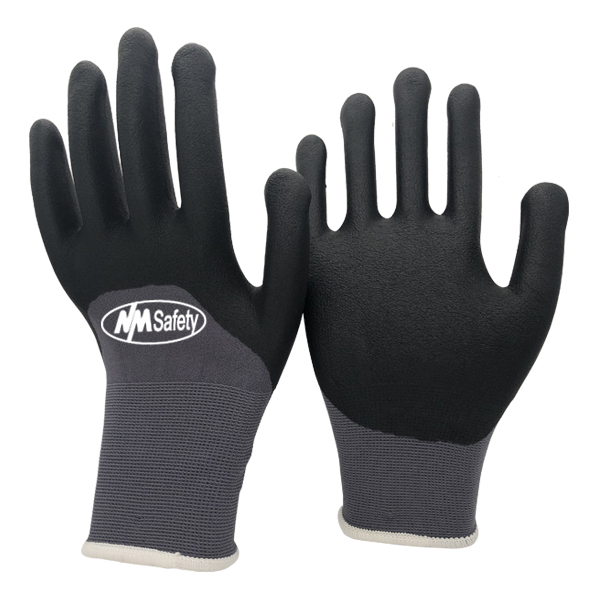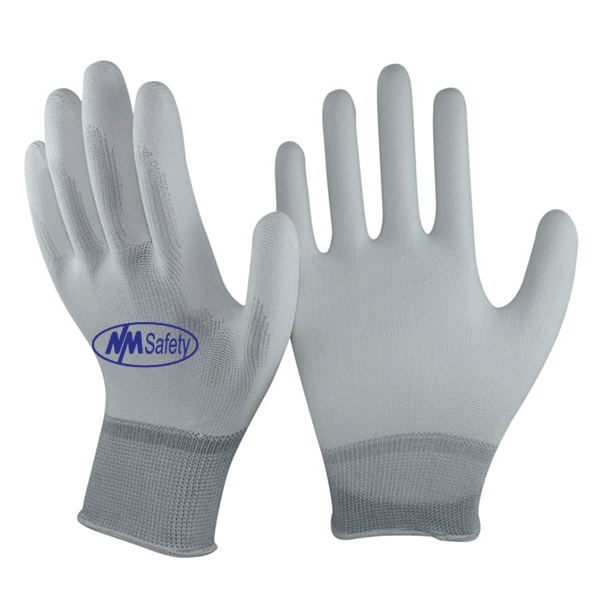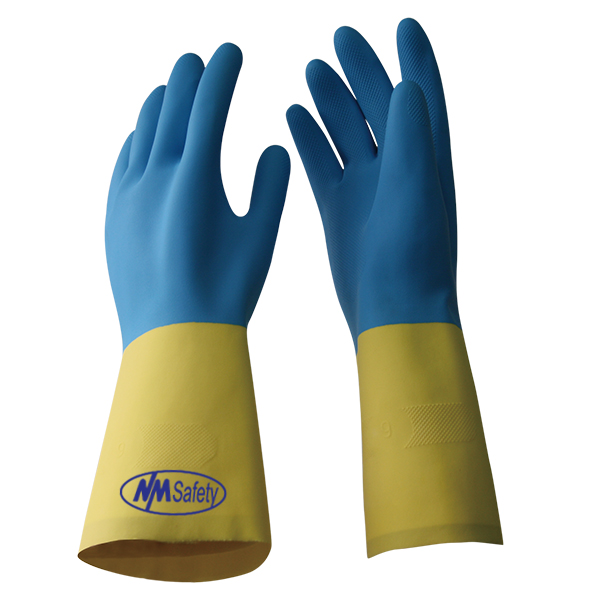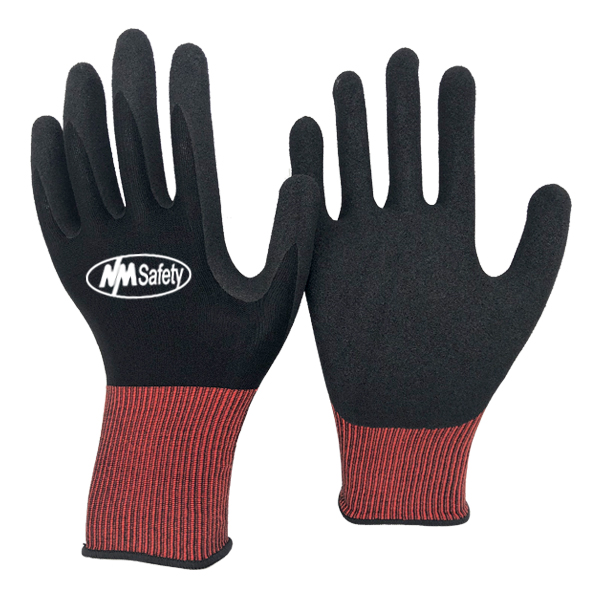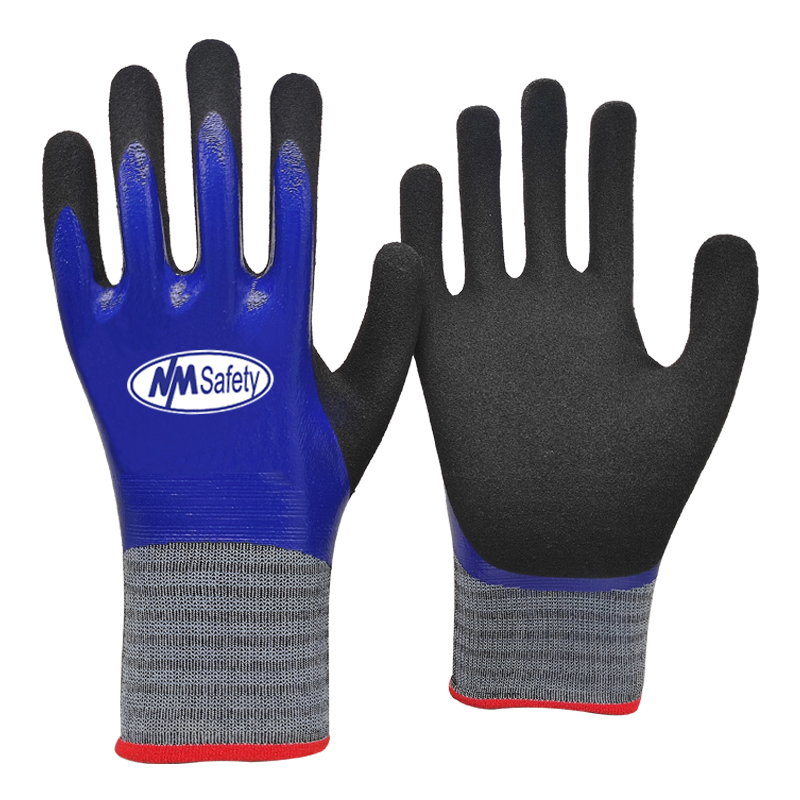What are Nitrile Coated Gloves?
Nitrile-coated gloves prevent workers from the pain of cold things while also providing additional protection from cuts, abrasions, and chemicals. Nitrile flex glove is resistant to snags, abrasion, scratches, and punctures. It protects as well as a spectrum of chemicals.
Nitrile, unlike natural latex, is a thoroughly manufactured material that won't aggravate allergies. Nitrile-coated gloves provide a good blend of warmth and protection for warehouse employees.
Nitrile gloves sprang to prominence as a viable latex replacement in the 1990s. Disposable nitrile gloves are more durable and chemical resistant than latex gloves because they are not as elastic or flexible.
Nitrile Gloves Made From:
Nitrile is a synthetic copolymer made by mixing acrylonitrile and butadiene. When nitrile gloves first came out on the market, they were more expensive than latex gloves due to the extra processing stage in the manufacturing process. However, technological developments have resulted in more cost-effective nitrile glove manufacturing techniques. Nitrile gloves are now comparable in price to latex gloves. Nitrile flex glove is also less likely to cause allergies than latex.
Features:
- Acid Resistant
- High Visibility
- Water-Resistant
- Oil Resistant
- Chemical Resistant
Advantages:
- Glove with many functions
- A nitrile glove prevents oil, grease, and water from penetrating the surface
- Individual packaging for each pair
- In both wet and dry situations, the grip is excellent
- Designed with comfort in mind
Types of Coating Gloves:
Flat Nitrile:
Gloves with a flat nitrile coating are sturdy and resilient. They are resistant to wear and puncture. They can withstand oil, grease, and liquids, but they are less skillful, making them unsuitable for small, precise assembly work.
Polyurethane (PU):
Polyurethane (PU) is considered the best coating for cut-resistant gloves due to its flexible and stretchy qualities. These gloves provide exceptional puncture protection without being overly bulky.
Because PU is both resilient and flexible, it's ideal for general sharp handling and assembly in many industries, including manufacturing, aerospace, and precision assembly.
Latex:
While compared to other glove coatings, latex has a lot of elasticity and grip. It is particularly true of crinkle latex, which provides excellent grip, abrasion, and puncture resistance. Latex is a long-lasting material used in many industries, including construction, metal manufacturing, utilities, and waste management.
Vinyl Gloves:
PVC, a petroleum-based film, is used to make vinyl gloves. The main advantage of Vinyl disposable gloves is their low cost of production. They are, however, less durable than latex and nitrile, and they provide only minimal protection from chemical and biological exposure.
What are Foam Nitrile Half Coated Gloves?
While dealing with oily surfaces, a foam nitrile half-coated glove behaves like a sponge, offering excellent grip in wet and greasy circumstances. Foam nitrile-coated gloves also let the hand breathe, which increases wearer comfort. However, when exposed to heavy oil or liquids, the open pore structure of foam nitrile can get saturated, making it better suited to dry or mild oil conditions. These gloves are excellent abrasion, puncture, and tear resistance.
Features:
- Machine Knit High-Performance Shell
- Ideal for Handling Glass, Sheet Metal & Lumber
- Provides 5X More Cut Protection than Leather
- Superior anti-oil and anti-grease protection
- Machine Washable
- The snag- and abrasion-resistant foam nitrile covering is exceptionally durable
- Usage in light oil applications, a nitrile-coated palm provides a better grip
- Flexible and pleasant
- For handling greasy parts and general assembly.
Advantages:
Foam nitrile half-coated gloves are more durable and chemical resistant than latex gloves. These are not being as elastic or flexible. As a result, these gloves are an excellent choice for anyone who works with potentially toxic or caustic.
Foam nitrile glove is chemically resistant to many chemicals and substances, making them waterproof, greaseproof, and oil-proof. Because of their best puncture resistance and dexterity, nitrile gloves are the best choice in different sectors.
When dealing with any moisture, foam nitrile glove is known to give these super grip levels, and in those scenarios, they can create a suction cup effect that dramatically improves grip.
Foam Nitrile-coated gloves are puncture, cut, snag, abrasion, oil, gasoline, and tear-resistant to a respectable amount – three times more puncture resistant than rubber. Nitrile is not flame resistant, yet, it can withstand temperatures ranging from -4°C (25°F) to 149°C (300°F). Foam Nitrile gloves are ideal for jobs that require handling oily parts, such as metal stamping and mechanics.
Benefits:
- The friction resistance is less. It is ideal for frequent change.
- Foam nitrile half-coated gloves are the best option in a variety of situations.
- These gloves are completely water-resistant.
- Nitrile Gloves are Longer-Lasting than Latex Gloves.
- Nitrile Gloves Provide More Protection than Latex and Vinyl Gloves
- Nitrile gloves are more resistant to acids and oils than natural latex gloves. These gloves are more useful in risky situations. Nitrile-coated glovesare naturally abrasion and puncture resistant, providing the wearer with even more protection.
Disadvantages:
Foam nitrile half coated gloves protect us from many types of hazards, But If we use gloves frequently so they can cause many problems that are following here:
- The most significant issues to consider are dirt, inflammation, maceration, allergy, and discomfort.
- Allergic sensitization can make it difficult for an individual to accomplish the responsibilities that require in the workplace.
- Contamination and irritation can occur through glove permeation, spills onto the skin from gloves, and absorption through gloves.
- Glove irritant dermatitis is frequent in the workplace and can be happened by itself.
Conclusion:
When working in industry, factory, or corporation, there are numerous dangers we should care about it. As a result, everyone should wear foam nitrile half-coated gloves to ensure their safety. These resistant gloves can help to keep workers safe. NM Safety sells these gloves at a reasonable price, and they are well effective. These gloves are of excellent quality and provide the best grip. We can confidently state that wearing NM Safety gloves will protect you from a severe injury.





